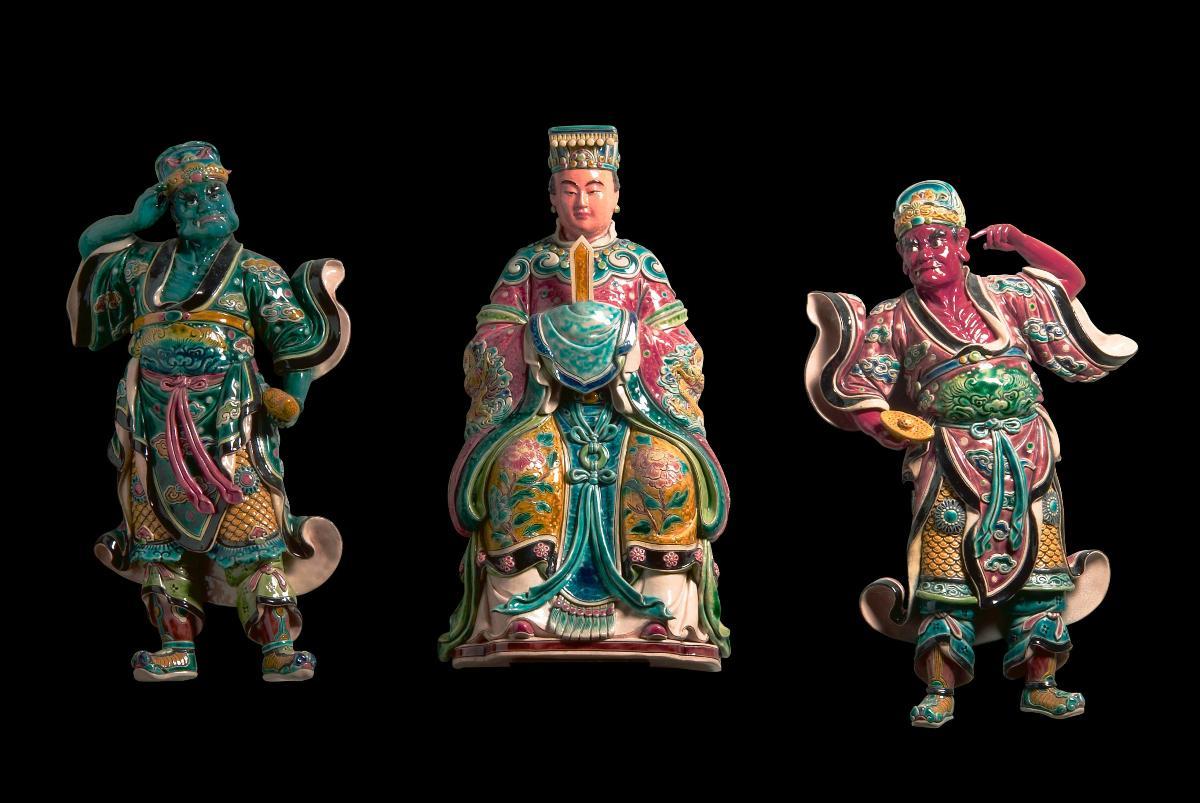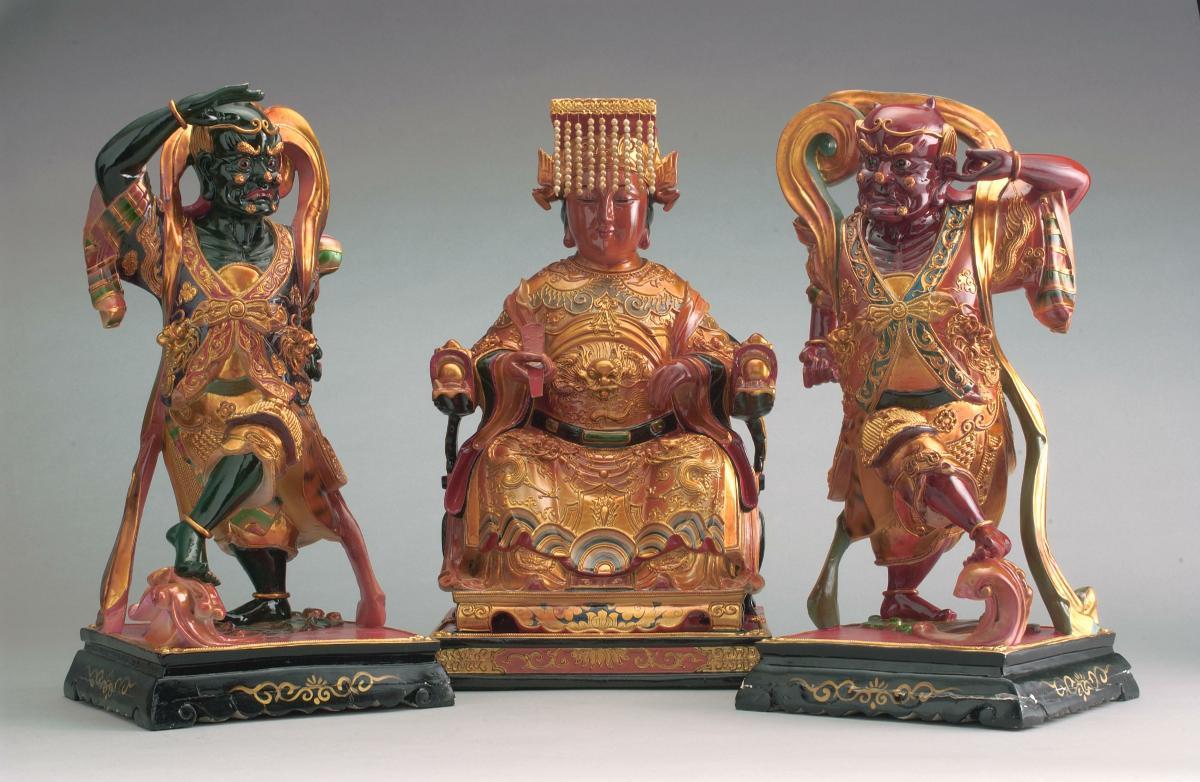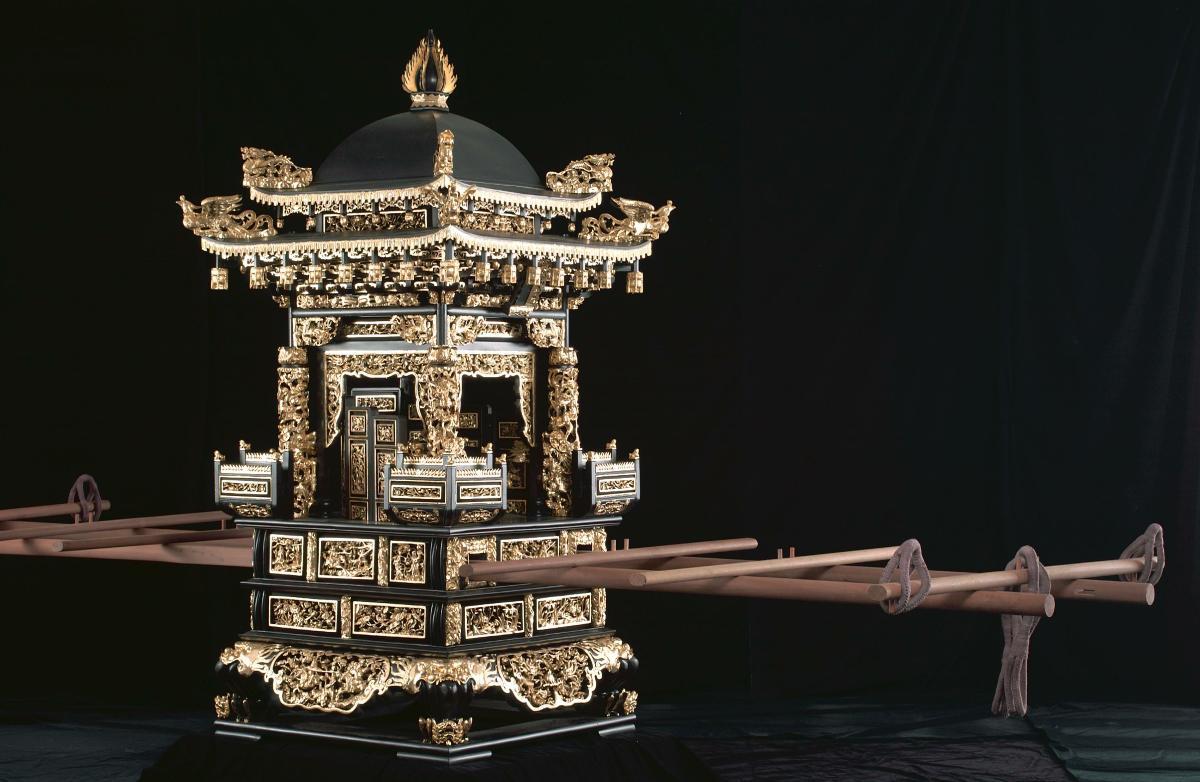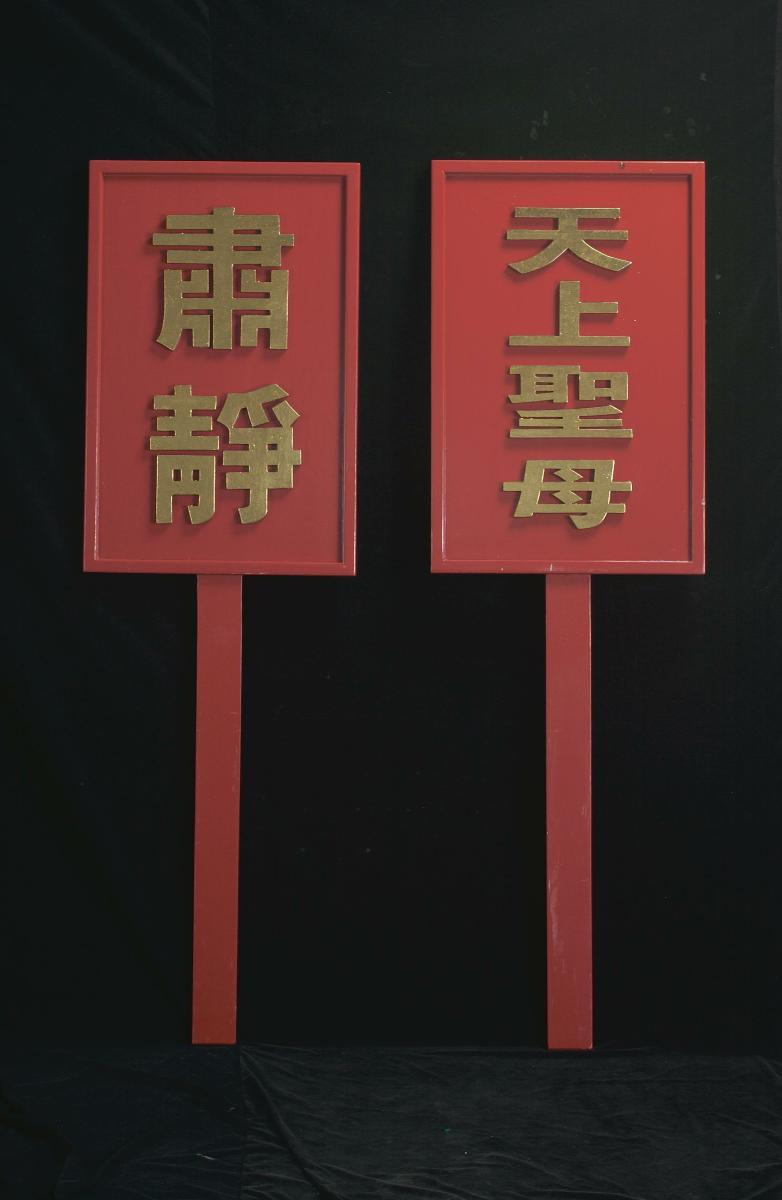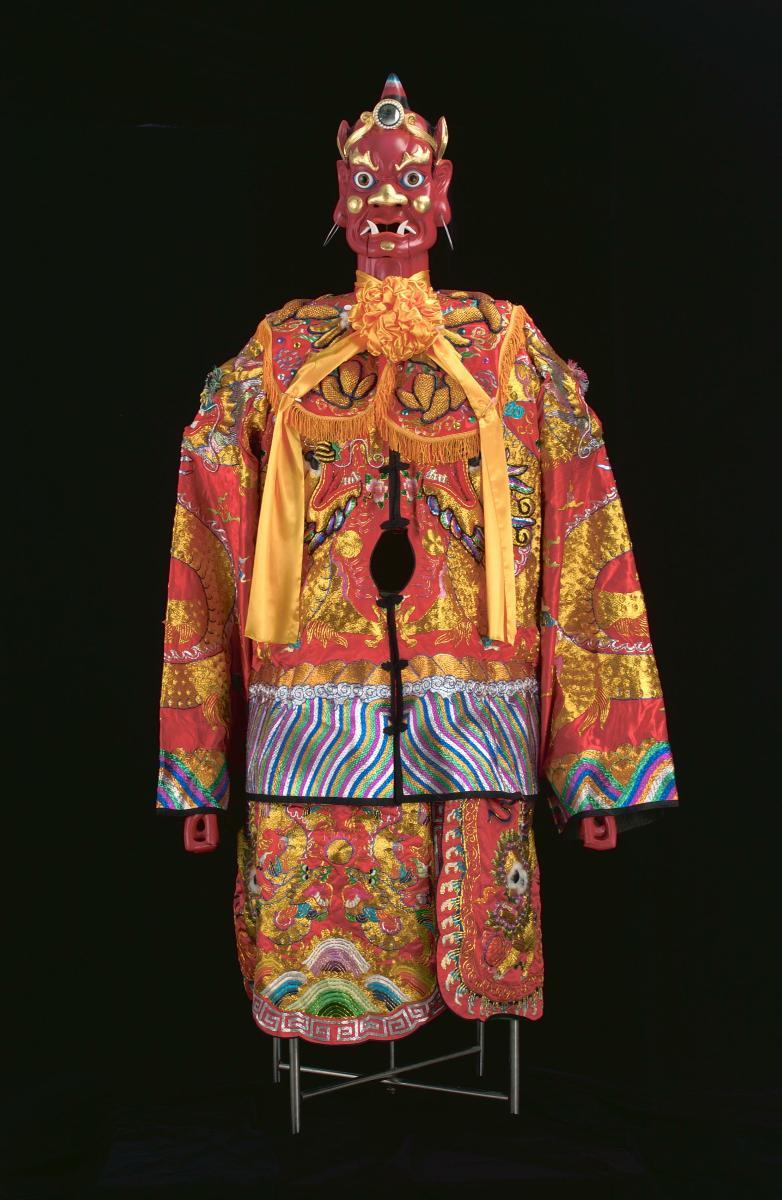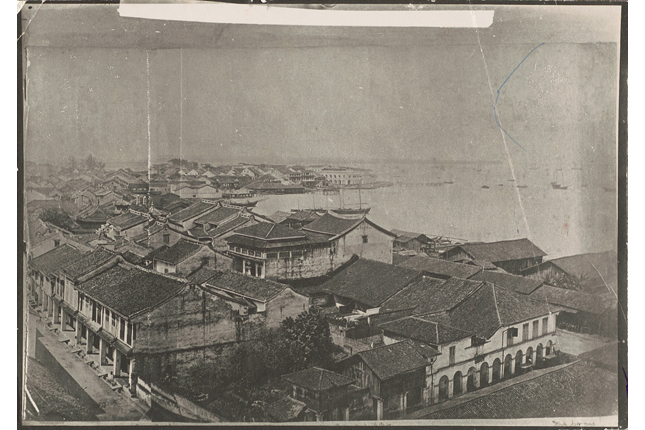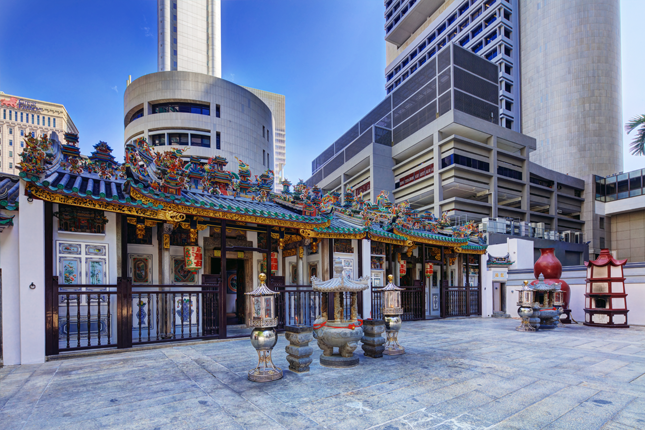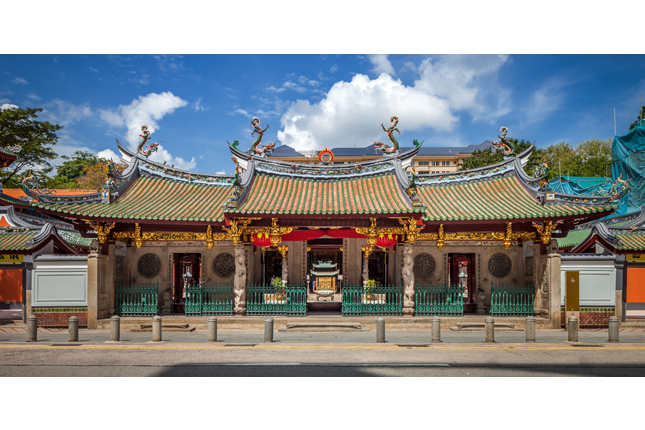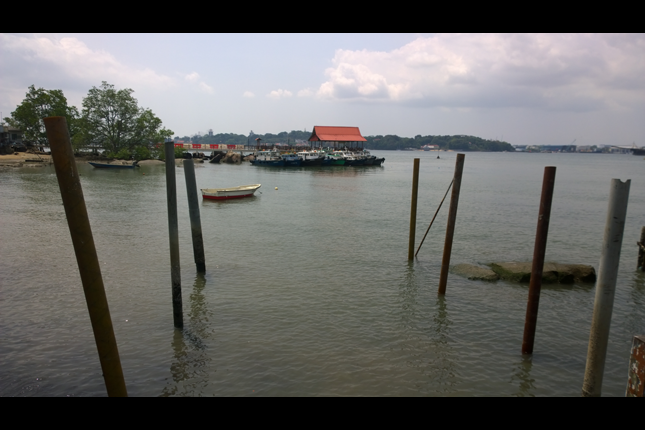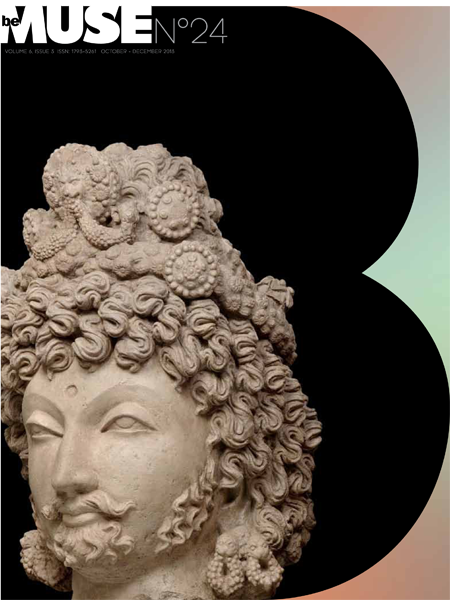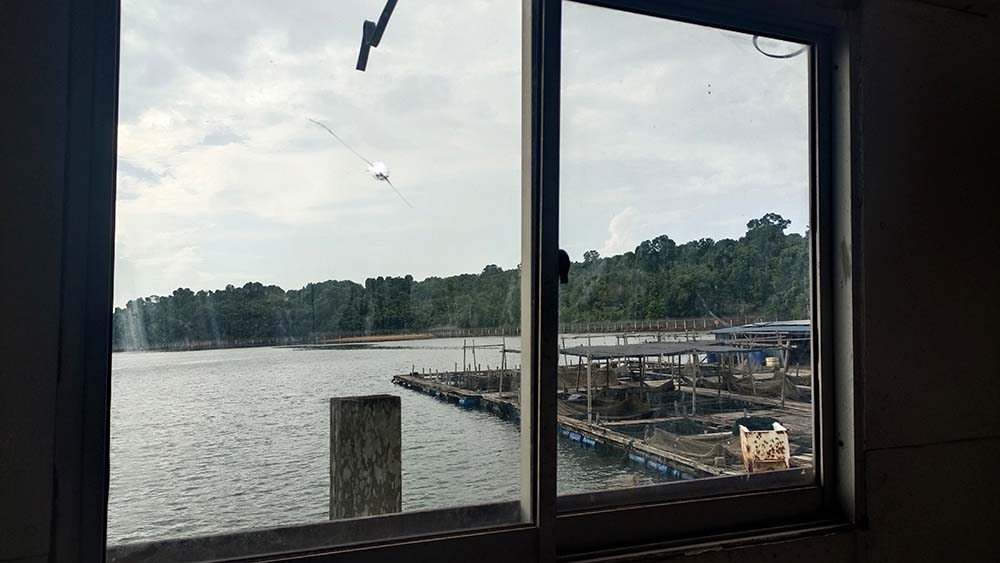Object size: 002: H40 x L20.8 x W7.8 cm,
Object size: 003: H40.3 x L25 x W8 cm
The goddess of the sea is affectionately known as Mazu 妈祖 (literally ‘mother ancestor’). She is also referred to by other titles such as Tianfei 天妃, Tianhou 天后 (Heavenly Concubine) and Tianshang Shenmu 天上圣母 (Empress of Heaven). Beyond South China, her devotees are found mainly amongst Chinese immigrant settlements in Taiwan, Hong Kong, Macau and South East Asia (mainly Malaysia, Singapore and Indonesia). Processions on the occasion of her birthday are still being conducted in some of these countries but their scale varies. The goddess’ origin and the development of her cult. There exist myriad accounts and variations of the goddess’ origins and legends. In most accounts, she is a maiden named Lin Moniang 林默娘 who lived during the Northern Song Dynasty (1127-1279 CE). Her birthplace is believed to be in a fishing village on Meizhou Island (Putian, Fujian province). She was said to have performed many miracles at sea such as saving her father and brother’s lives when they encountered a storm whilst fishing. It is highly likely that the goddess was originally a famous shaman who possessed unique powers in protecting sea-farers. The goddess’ influence increased as her functions expanded simultaneously. At the end of the Song dynasty, she no longer protected only those endangered at sea but also attended to all water-related calamities such as droughts, incessant rains and floods. In 1150, her status was boosted when she was accorded the title, “Nation-protecting Heavenly Concubine” (Huguo Tianfei 护国天妃) by the imperial family. However, during the Ming dynasty (1368-1644) her cult declined briefly as imperial patronage waned. In the early Qing dynasty (1644-1911), the support of the Kangxi emperor (1661-1722) propelled her cult to new heights. He accrued his military success to the goddess and awarded her the highest honours by honouring her the title “Empress of Heaven”. Imperial patronage provided critical recognition and hence legitimacy to a once local deity by conferring it national relevance.




